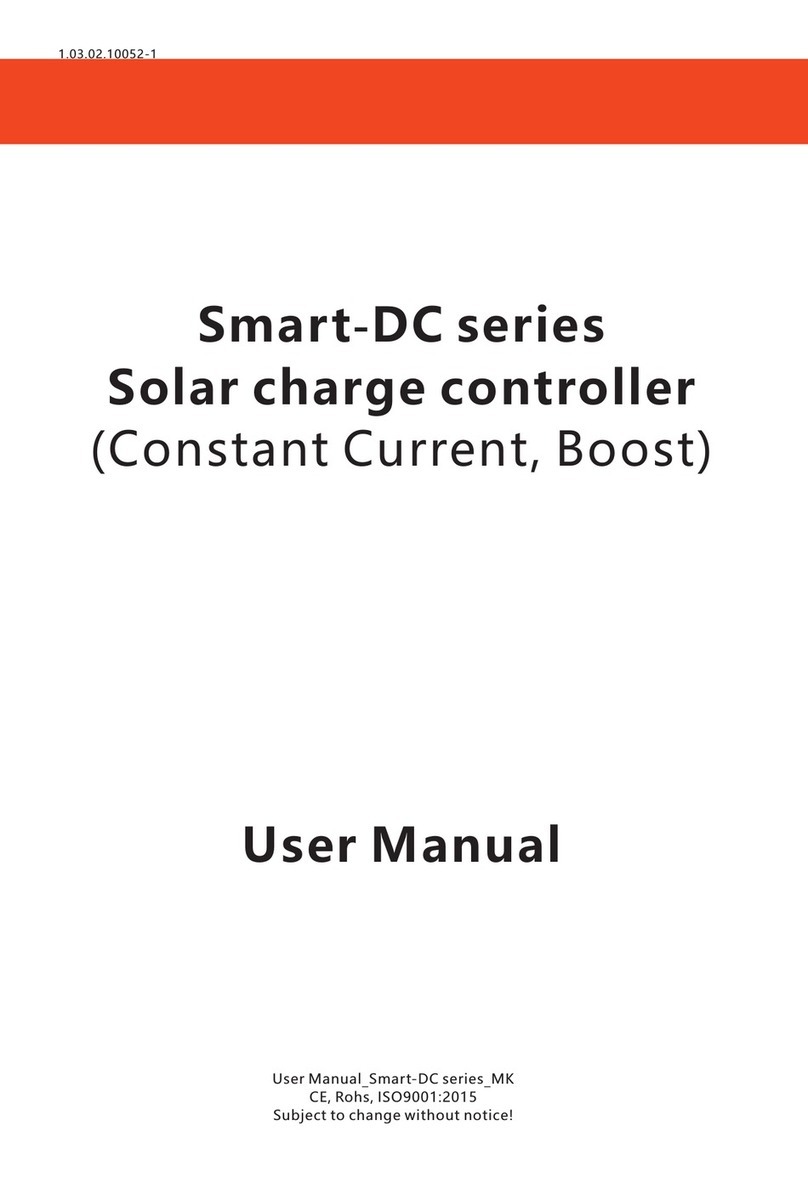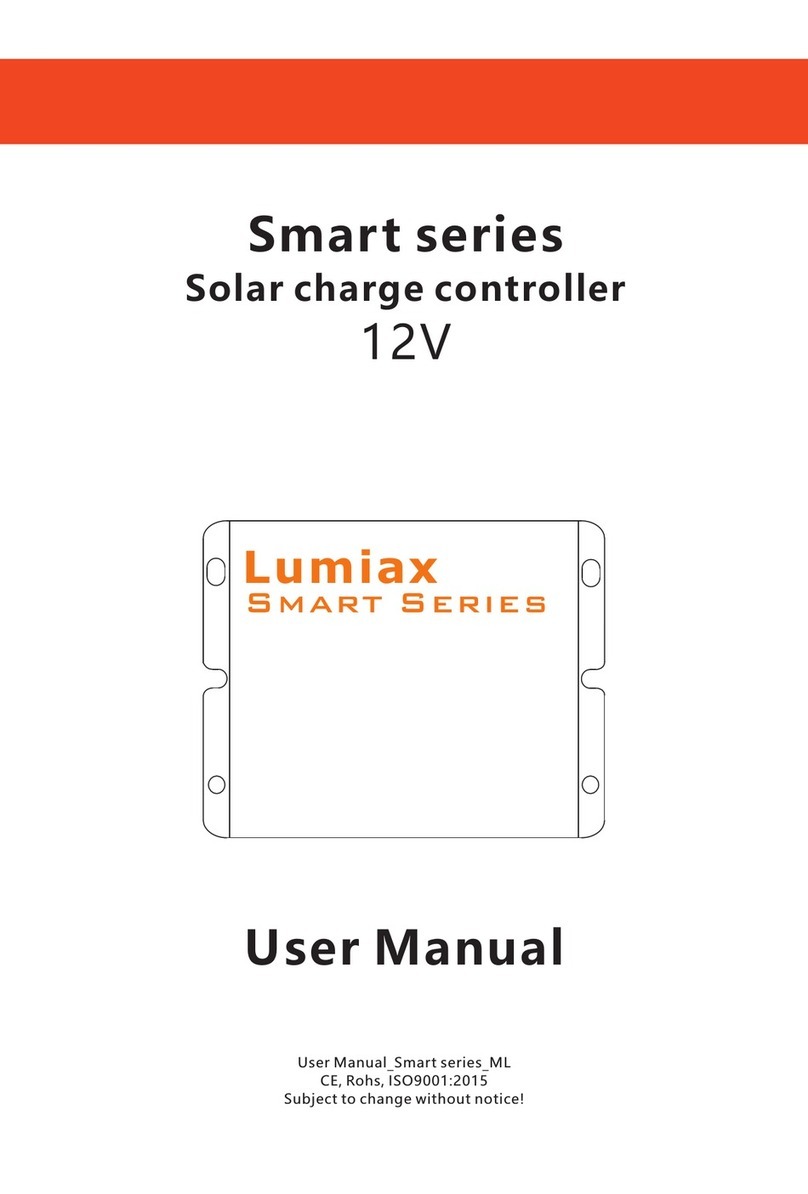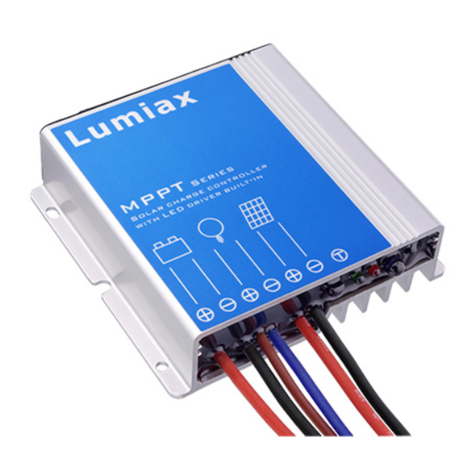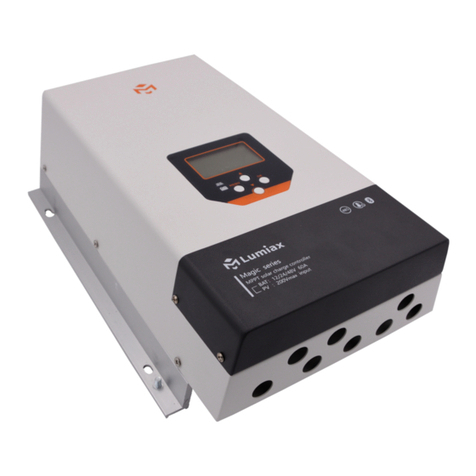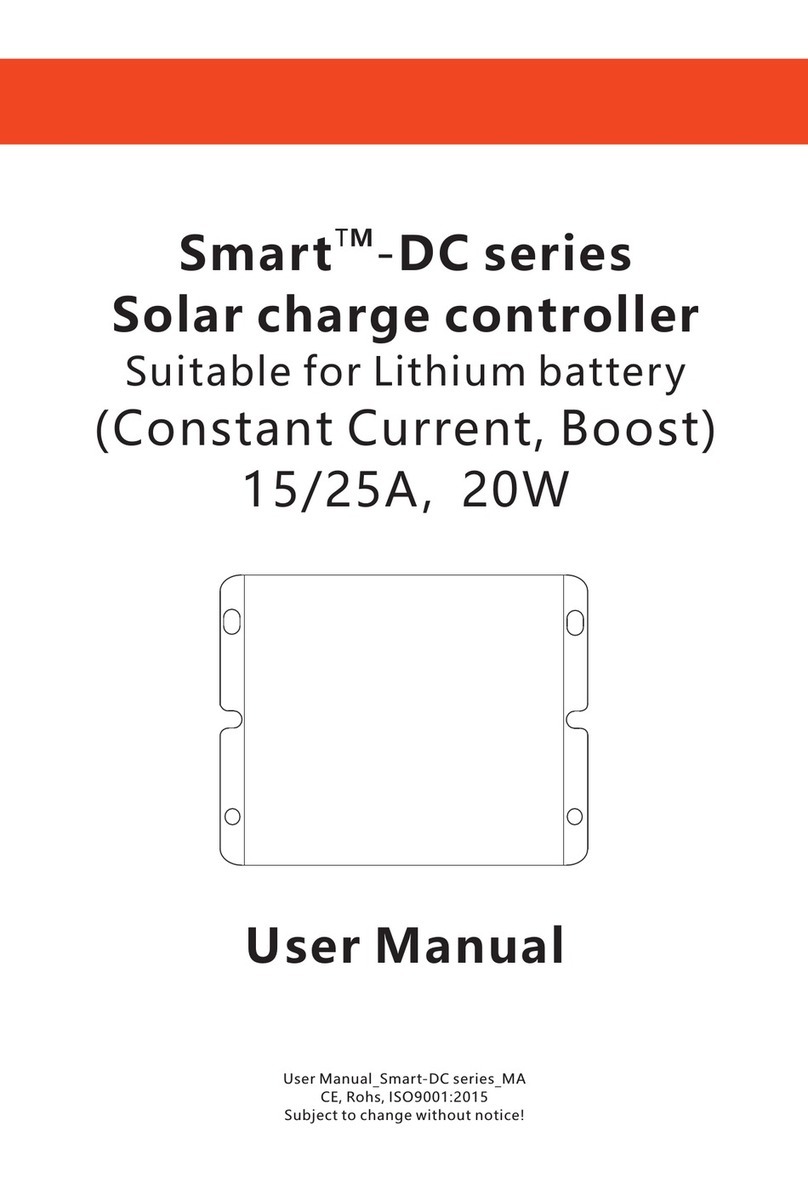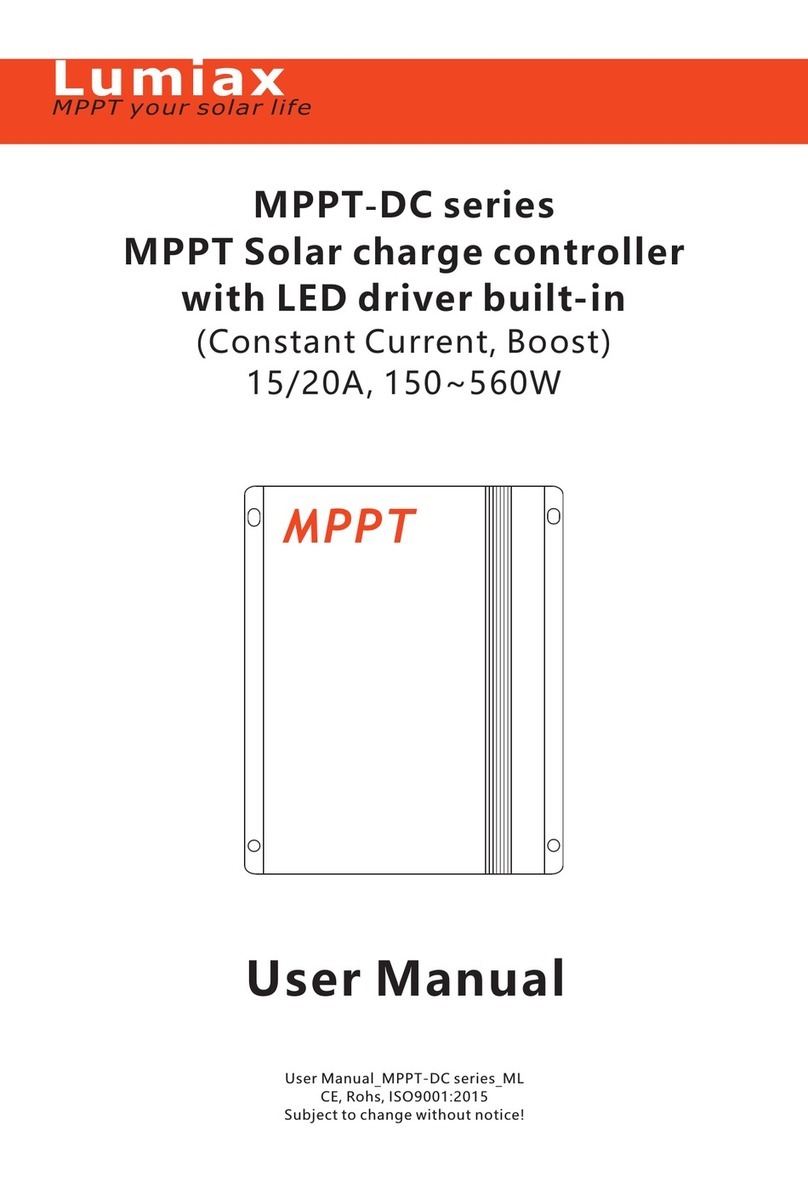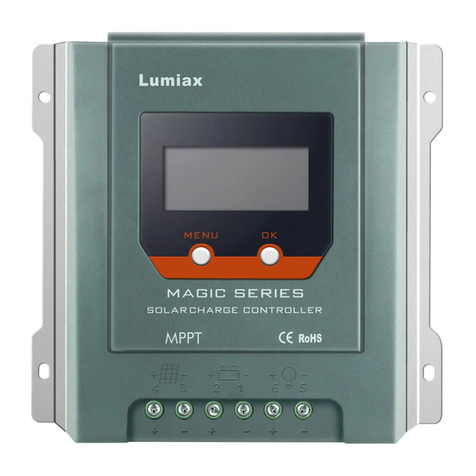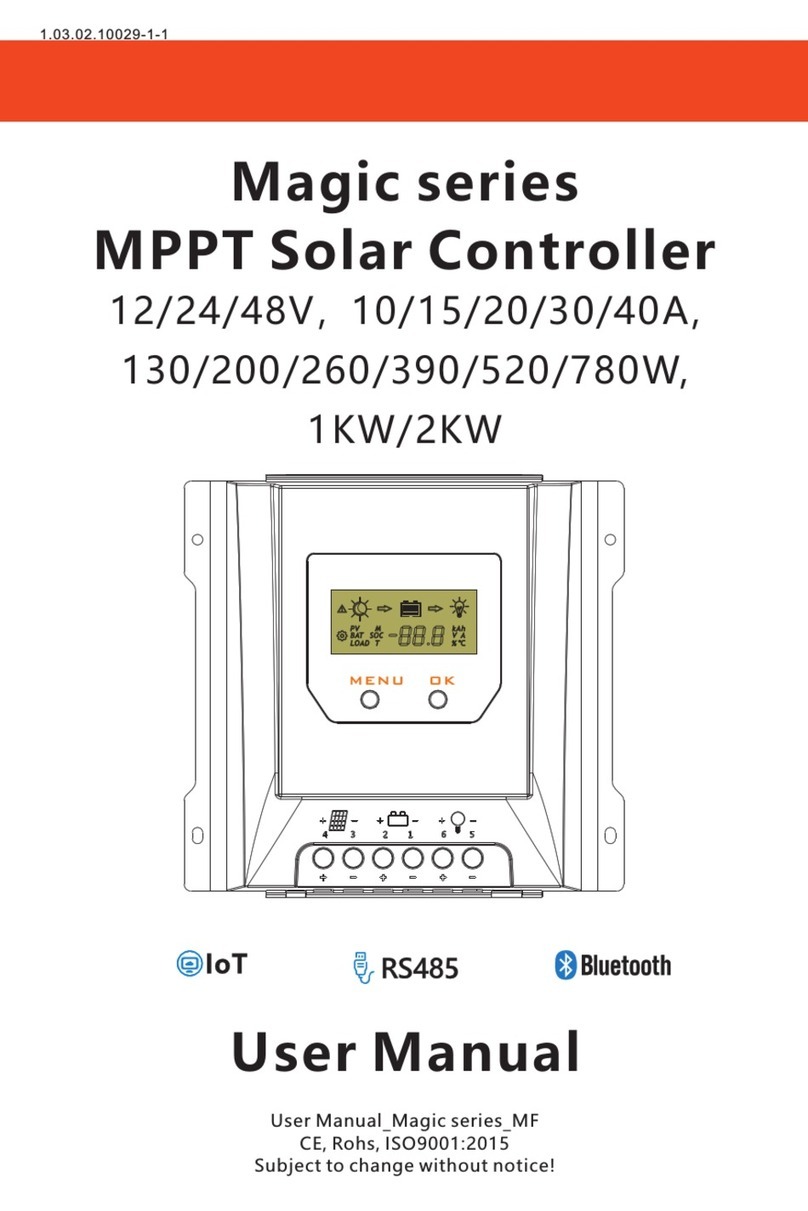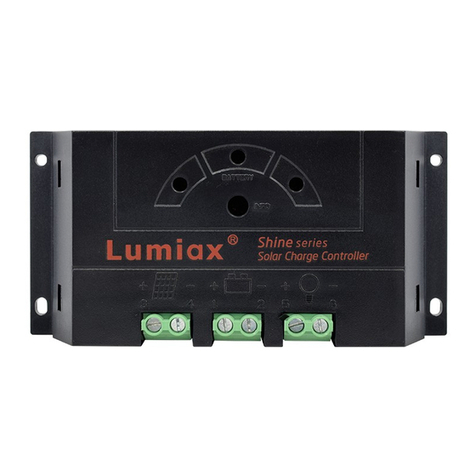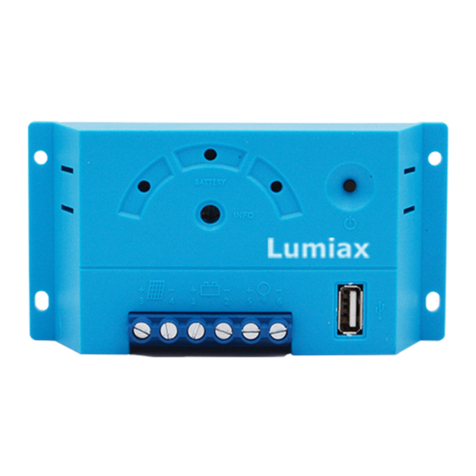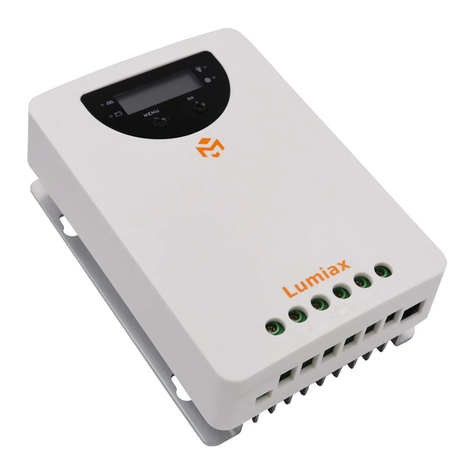
Solar charge controller Smart-CC series User Manual
Page 3 of 5 pages
8.LVD, LVR, Threshold, Dimming
8.3 Day/Night Threshold, Day/Night Delay
The controller recognizes day and night based on the
solar array open circuit voltage. This day/night threshold
can be modified according to local light conditions and
the solar array used.
Day/Night threshold setting range: 1.0~3.0V.
In the evening, when the solar array open circuit voltage
reaches the setting day/night threshold, you can adjust
the day/night delay time to make the load turn on a little
later.
Day/Night delay time setting range: 0~30min.
!
will restore only when the battery being recharged to the
recovery voltage.
If the controller goes into low voltage disconnect, it
Sunset
Dusk
Sunrise
Dawn
1.0~3.0V 1.3~3.3V
!1. Day/Night threshold voltage of load disconnect is
0.3V higher than the setting data, means the load will
disconnect when the solar voltage at 1.3~3.3V.
2.The controller has an automatic day/night threshold
adjustment function. If the lowest voltage of solar array is
higher than the setting day/night threshold, the load has
no output in first night, 24 hours later the controller can
automatically adjust the day/night threshold to meet the
requirements of lighting at night.
8.1Low Voltage Disconnect(LVD)
8.2Low Voltage Reconnect(LVR)
Low voltage disconnect setting range: 2.4~7.2V.
Low voltage reconnect setting range: 2.6~7.4V.
Dusk to Dawn(D2D)
Light on
Light off
D/N Thr
D/N Thr
Sunset Sunrise
D/N Dly
Time1Time2Time5Time3 Time4
Light on
Light off
D/N Thr
D/N Thr
Sunset Sunrise
D/N Dly
For controllers with infrared sensing function( R series), if
work mode is set to Five-stage Night Mode or T0T mode ,
"DelayOff and Dim NP work in Time3 and Time4 .
"DelayOff" setting range: 10~150s.
"Dim NP" setting range: 0~100%.
" " " "
" " " " " " "
7. Streetlight Function
7.1 Dusk to Dawn (D2D, no induction function)
If Time1 is set to D2D ,the controller works in dusk to
dawn mode.
" " " "
!1.SMR-CC controller is set to D2D mode, the
corresponding dimming setting is still valid.
2. If Time1 is set to D2D mode, Time4 can not be set
to T0T mode.
" " " "
7.2 Five-stage Night Mode(Time3、Time4 can induction)
You can set the Time 1-5 and Dim 1-5 with S/SG-Unit.
7.3 T0T mode(Time3、T0T can induction)
D/N Thr
Time1Time2Time5
Time3 T0T
Light on
Light off
D/N Thr
Sunset Sunrise
D/N Dly
If "Time4" is set to "T0T", this mode is T0T mode.
* If Time4 is set to T0T mode, Time1 can not set to D2D
mode.
" " " "
Parameter setting example:
Time1: 1.0H/100% Time2: 2.0H/80%
Time3: 3.0H/60% Time4: T0T/40%
Time5: 2.0H/100%
DelayOff: 10s Dim NP: 10%
The controller works as follows:
After the arrival of the evening the first time the load is
lit for 1 hour (full power 100%), the second time the load
is lit for 2 hours (power 80%), the third time load light for
3 hours (when people is near the lamp then the load is
60% light, when people is away from the lamp the load is
60% * 10% light), and then the controller according to
the actual night time automatically calculate the length
of the fourth paragraph (when people is near the lamp
then the load is 40% light, when people is away from the
lamp the load is 40% * 10% light), the fifth time load
light 2 hours (full power 100%).
8.4 Dimming
8.4.1 Auto Dimming
The "Dim Auto" of S/SG-Unit is set to "Yes",
V" and "Dim %" at the same time, press the "Send" key to
set up the controller. when the battery voltage is lower
than the voltage of "Dim V" , it starts to dimming
automatically. Battery voltage reduces per 0.1V, load
current decreased according to the set of "Dim %", the
minimum output current is 10% of the setting current.
item set "Dim
!
minimum output current can be as low as 0.3A.
2. Dimming voltage should not be greater than the voltage
of “CVT”(Charging voltage target).
When the battery voltage is reduced to close to the LVD
voltage, the output current of the controller is reduced to
0.3A.
1.If the controller is set to “Dim” or “Auto Dim”, the
